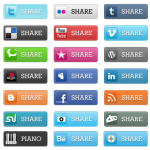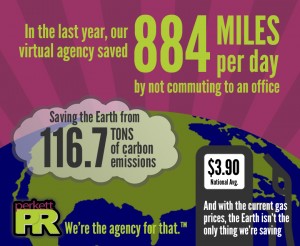Our influencer Q&A today is with well-known inbound marketing evangelist, Laura Fitton. Laura “@Pistachio” Fitton is the founder of www.oneforty.com, founder and principal of Pistachio Consulting, co-author of “Twitter for Dummies” and the inbound marketing evangelist at HubSpot. We had the chance to ask her some questions about her career, her passions and what 2012 has in store for her.
Who has been the most fascinating person you have ever met?
My daughter, S. How cliched is that? She is so unlike me. She is so preternaturally gentle and wise. I watch how she is with her little sister and how she “manages” me. I learn so very much from her. Fascination is actually the perfect word to describe it. Gobloads of overwhelming maternal love, but also a great deal of fascination and respect for what is amazing and special about her.
What do you love most about social media? What bugs you about social media?
The humans. I love the humans, deeply, even if I don’t always express it well or understand how best to make them feel good about themselves. I love trying to help people feel more excited, become more connected and try things that they might not otherwise give themselves the chance to try.
As a busy mom of two, how do you prioritize?
Pretty poorly, sometimes. One thing I do well is rotate priorities over time. For example, my kids missed out on a lot of time and attention during the crunch years of oneforty.com, and they’re getting a lot more of my time and attention now that my life is in better balance. When my childcare situation blew up at the end of February, I took it as a hint from the universe to do something I’d long dreamed of. I took a temporary 20% paycut to spend Tuesdays at home with my daughters. It’s an amazing privilege to be able to do that and I’m incredibly grateful to HubSpot for the flexibility (this alone should tell you what an amazing employer they are!). My youngest starts school full time in September, so I’m squeezing every drop out of the last few “home all day” months.
I also regret to say that I threw my (romantic) personal life completely under the train during the oneforty.com years. It was what I felt I had to do at the time, but it was probably a mistake. No biggie, lesson learned. We always grow from stuff like this. I’m really enjoying the process of establishing a new social life – both new friends and potential dates – and the cool events and activities I’m going to regularly as a part of it.
How do you explain your career to your children?
Some stuff – mommy had a company, mommy is at HubSpot now, etc. they know in great detail. I brought them to HubSpot’s last company meeting because it fell on my “SAHM Tuesday.” Ditto for General Catalyst’s big annual networking event. They’ve been to a number of networking events because I want them to see themselves as part of the technology, business and cultural worlds from the get go. Gratitude to Halley Suitt for encouraging me to try this years ago.
Other stuff – mostly around my “visibility” (readership, press, awards, hype about me) – they have little to no idea about, and I try hard to keep it that way. One hugely proud moment was S____ blurting out “Mommy, what’s Twitter?” in a quiet moment at a MSNerd networking event, only a couple of years ago. She knew I had a book and a company, but I try to keep that weird side of my life away from my kids. She has a vague sense of it now, but she asks “Mommy, will you share this picture of me with your friends?” with no sense of what that really means.
In general we talk about it in terms they will understand and can relate to their own lives. For example, they know about YouTube because we have watched it together for years, and they have their own YouTube channel now. But, I don’t link to or promote that channel from my social media accounts partly for privacy and partly to keep it a small, quiet place for them to explore.
What has been your biggest accomplishment thus far?
Hands down it’s my daughters. Period. End of story.
You have always spoken about the business potential of Twitter. Do you still feel as passionate about this?
Yes. Very much so. I guess I’m a lot quieter about it lately. The passion didn’t go anywhere though. My Webvisions Portland keynote, planned for May 17th, should make that clear.
Do you have any hobbies or passions?
Too too many! Ice hockey, yoga, horseback riding, rock climbing, gardening, pets (we have a cat, two dogs and four chickens!), amazing food, adventure and travel. I’m lucky to have had the chance to reconnect with almost all of that since the acquisition of oneforty last August.
I’m training to do my first race – of any kind – this summer with the Tough Mudder at Mt. Snow in July. Ten to twelve miles of running up ski slopes, dozens of “bootcamp” style obstacles and electroshocks at the end. Somehow seemed a fitting way to mark turning 40.
My biggest passion remains trying to help people and make a difference. Coming to work every day to spread the story of how inbound marketing helps businesses grow – and therefore creates jobs – ignites that core passion very much.
What is next for you in 2012?
The rate of on-the-job learning for me at HubSpot is just awesome. I’m so excited to help get the incredible work HubSpot and its customers are doing more widely known out in the world, because I know that it can help others to a tremendous degree.
It’s amazing to be at a company with 6500 customers and a marketing community of MILLIONS of people. It’s even more exciting to realize only a tiny fraction of that community realizes that we’re a software company. We’ve been so selfless in our marketing efforts for years that some huge number of people think we’re an agency.
As that changes, and marketers realize we’ve got this really HELPFUL all-in-one software, we can help even more businesses grow while stamping out crappy marketing. We think marketing can be this really noble profession that provides incredible value to those who receive marketing messages. That’s the wave of the future – selfish marketing perishes and marketing that people love helps businesses thrive.

 Social media breaks the mold of traditional marketing where you measured success against a balance sheet. Forbes contributor Todd Wilms explains Why Social Media is the Ultimate “Pay-it-Forward” for Marketing and provides steps to get you started.
Social media breaks the mold of traditional marketing where you measured success against a balance sheet. Forbes contributor Todd Wilms explains Why Social Media is the Ultimate “Pay-it-Forward” for Marketing and provides steps to get you started. Measuring the return on investment of your social media strategy is something that still frustrates a lot of brands and marketers. Shea Bennett posts Is Social Media ROI A Reality (Or A Myth)? [INFOGRAPHIC] that takes a closer look at how we are slowly but surely getting to the ROI of social media. via AllTwitter.
Measuring the return on investment of your social media strategy is something that still frustrates a lot of brands and marketers. Shea Bennett posts Is Social Media ROI A Reality (Or A Myth)? [INFOGRAPHIC] that takes a closer look at how we are slowly but surely getting to the ROI of social media. via AllTwitter.





 There may be some debate over whether or not
There may be some debate over whether or not 





